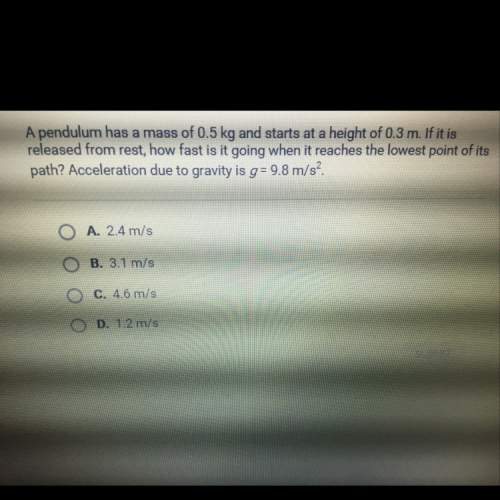
Physics, 03.02.2021 23:40 dazesreplayy2451
Calculate the change of temperature of a 100 g piece of glass raise if it absorbs 7000
joules of heat and its specific heat capacity
is 0.50 J/gºC?
Q-MATC

Answers: 1


Another question on Physics

Physics, 22.06.2019 10:10
Which branches of natural science include the study of an organism that lived 10 million years ago
Answers: 1

Physics, 22.06.2019 16:30
In the nineteenth century, gregor mendel first determined some basic rules of genetics that have been observed throughout all types of life. no observations have disproved these basic rules of genetics. charles darwin developed the idea of biological evolution around the same time, but he was unaware of mendel’s discoveries in genetics. over a century later, darwin’s idea of evolution was modified in order to incorporate mendel’s rules of genetics along with the other evidence that darwin had used. what is most likely the relationship between mendel’s rules of genetics and darwin’s idea of biological evolution? a.)mendel’s genetics states laws that are now part of the theory of biological evolution.b.)biological evolution states laws that are part of mendel’s theory of genetics.c.)mendel’s genetics replaced darwin’s entire concept of biological evolution.d.)biological evolution is a law that explains why all genetics exist.
Answers: 1

Physics, 22.06.2019 16:40
Beryl states that insulation with the smallest possible thermal conductivity is best to keep a house warm in winter, but worst for keeping a house cool in summer. sapphire insists the reverse is true: low thermal conductivity is good in the summer, but bad in the winter. which one, if either is correct? a. beryl, because low thermal conductivity results in low heat transfer. b. beryl, because low thermal conductivity results in high heat transfer. d. sapphire, because low thermal conductivity results in high heat transfer. e. neither, because low heat transfer is desirable both in summer and in winter.
Answers: 2

Physics, 23.06.2019 00:00
You are driving to the grocery store at 20 m/s. you are 110m from an intersection when the traffic light turns red. assume that your reaction time is 0.50s and that your car brakes with constant acceleration. how far are you from the intersection when you begin to apply the brakes? what acceleration will bring you to rest right at the intersection? how long does it take you to stop after the light changes? the known values: vi=20m/s xi=110m t=.50s vf=0m/s xf=0m a=?
Answers: 3
You know the right answer?
Calculate the change of temperature of a 100 g piece of glass raise if it absorbs 7000
joules of he...
Questions

English, 24.06.2021 20:40

Business, 24.06.2021 20:40


History, 24.06.2021 20:40

Mathematics, 24.06.2021 20:40


Computers and Technology, 24.06.2021 20:40


English, 24.06.2021 20:40

Mathematics, 24.06.2021 20:40





Mathematics, 24.06.2021 20:40

Physics, 24.06.2021 20:40




Mathematics, 24.06.2021 20:40




